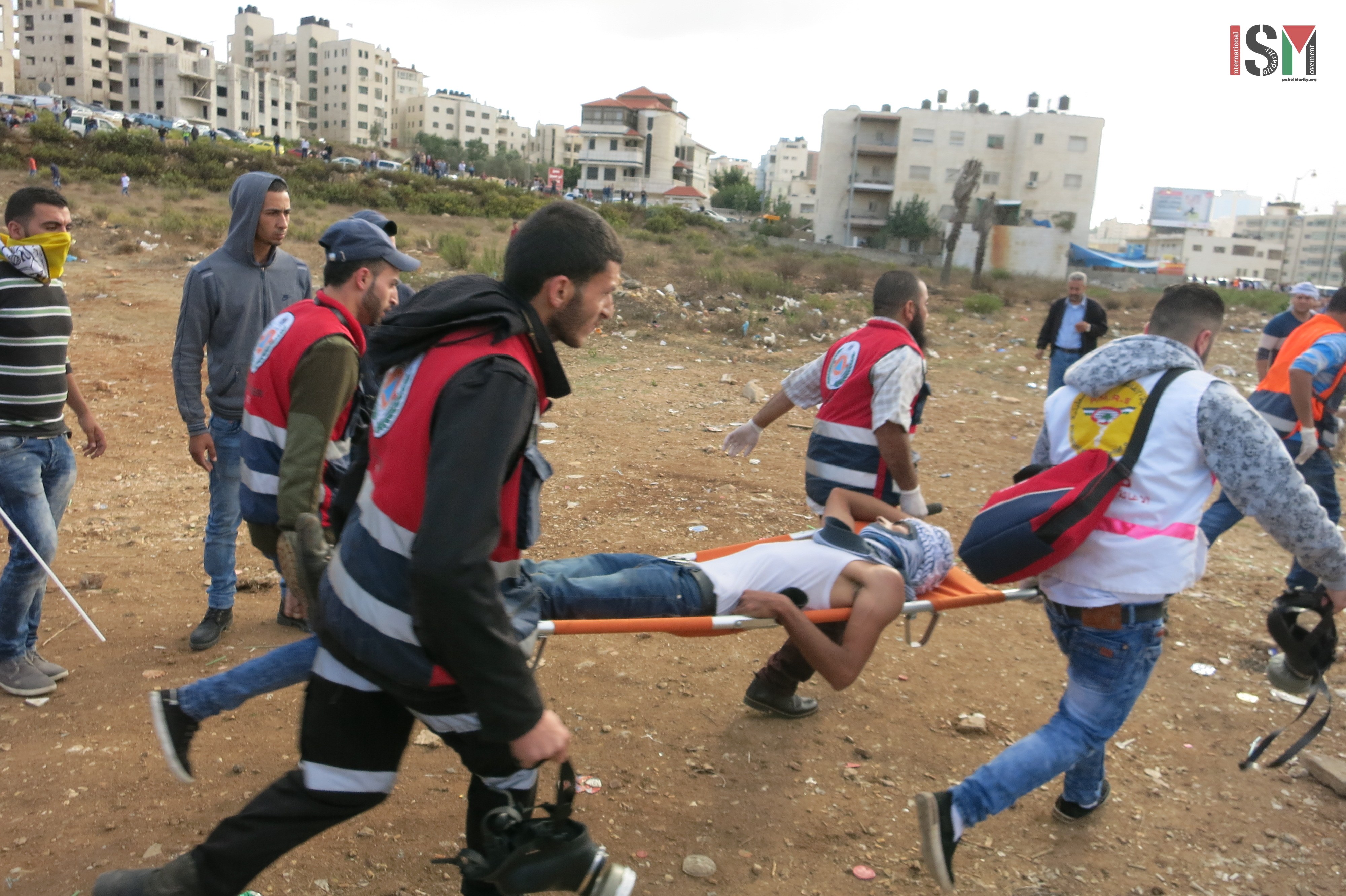Category: Features
-
Israeli forces attacks demonstration in Kafr Qaddum
10th October 2015 | International Solidarity Movement, Nablus team | Kafr Qaddum, occupied Palestine In the afternoon of October 9th 2015 in Kafr Qaddum, Israeli forces preempted a peaceful demonstration with an ovewhelming display of military power by shooting an unarmed man with live ammunition in the thigh and abdomen. This man is Moayad Shtaiwi, 61, and…
-
Beit El demonstration under attack by Israeli forces after Martyr laid to rest
10th October 2015 | International Solidarity Movement, Al-Khalil team | Ramallah, occupied Palestine Less than one hour after the Halabi family laid their son, martyr Mohannad al-Halabi, to rest in a cemetery in Ramallah, violent confrontations broke out in the nearby Beit El area. In a continuation of the sharp escalation in violence seen across…
-
Israeli army prevents farmers to pick olives in Burin
9th October 2015 | International Solidarity Movement, Nablus Team | Burin, Occupied Palestine This Friday morning, at approximately 10:30 am, a group of 6 soldiers came down the mountain from the illegal Israeli settlement, Arousa, in the village of Burin, to prevent the family of Ahmad Mustafa Najjar from picking their olives. Early in the morning,…



